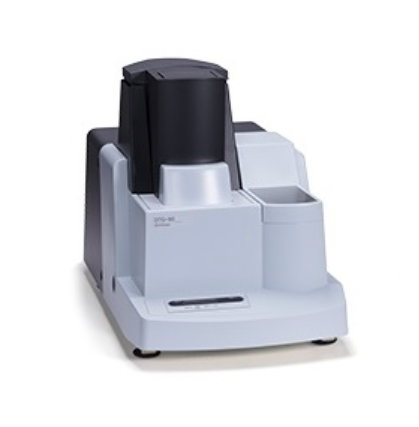
This instrument varies the sample temperature in accordance with a program and simultaneously measures the change in mass of the sample (TG) and the temperature difference between the sample and a standard substance (DTA). An analytical balance mechanism (Roberval mechanism) offers high reproducibility and allows worry-free operation even for measuring sample weights. Two models are available for different maximum measurement temperature requirements-the DTG-60 (max. 1,100 °C) and the DTG-60H (max. 1,500 °C). Corresponding DTG-60A and DTG-60AH models with a built-in autosampler are also available to automatically measure up to 24 samples.
This instrument varies the sample temperature in accordance with a program and simultaneously measures the change in mass of the sample (TG) and the temperature difference between the sample and a standard substance (DTA). An analytical balance mechanism (Roberval mechanism) offers high reproducibility and allows worry-free operation even for measuring sample weights. Two models are available for different maximum measurement temperature requirements-the DTG-60 (max. 1,100 °C) and the DTG-60H (max. 1,500 °C). Corresponding DTG-60A and DTG-60AH models with a built-in autosampler are also available to automatically measure up to 24 samples.
With TG/DTA measurement, qualitative and quantitative analysis, the study of reaction mechanisms, and evaluation of thermal resistance can be carried out by observation of various types of reactions and interactions between the sample and special atmosphere gases. With the DTG-60 Series, various applications are supported by configuring individual flow channels. There is one gas inlet, so the gas can be led directly to the sample, and time is not required for the reaction.
The thermogravimetric (TG) measurement range is broad at ±500 mg, with a weighing capacity of 1 g (including tare weight), so it can be used for diverse measurements.
The built-in furnace cooling fan starts automatically after the measurement is complete.
Also, it is possible to stop the fan at a predetermined temperature (setting can be varied), so the next measurement can be started immediately.